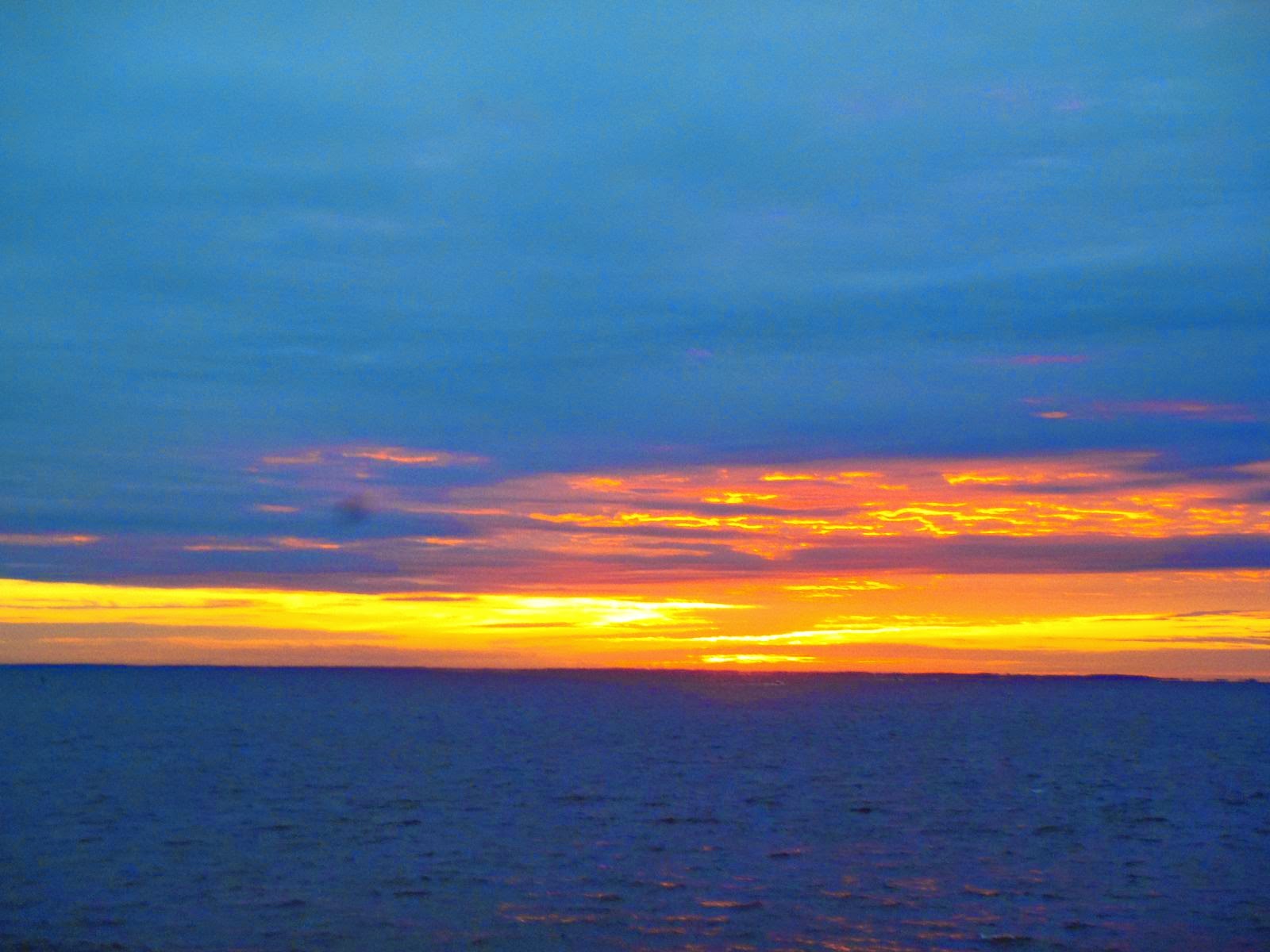Maryland is a vastly diverse State. We have the mountains, we have the ocean, and we have the Chesapeake Bay. For those who do not know, the Chesapeake Bay is the largest estuary in the world. It effects a number of things in our State from politics to the weather. For about half the State, it drastically effects our culture. All over the world they serve Maryland crab cakes.
The water of the Chesapeake comes from 5 different States besides Maryland. For many Marylanders, 'going down the shore' has been a tradition for generations. My in-laws were kind enough to take us down the shore for a weekend vacation in Chesapeake Beach.
Sailing is a huge deal here. There are many races on the weekends but the biggie is the Annapolis to Oxford Race. My father in law took 1st place in his class when he used to own a sailboat in the 80's. We did not realize it was going on, but the race came right through our fishing spot. It was a blast to have them coming by us. We caught a mess of spot that day. We caught so many we were giving them away to other fisherman.
We spent a good part of the day on Solomons Island seeing the Calvert Marine Museum. I put a lot of links which I suspect many do not check out. This however, is one you should check out. I love small museums and seek them out. This one has been on my list for years and I regret not going sooner. It was stellar. The image above is from the lower deck of the Cove Point light house that was moved to the museum and restored. Why I did not take a photo of it's entirety is beyond me. This form of screw pile light house is unique to the waters of the Chesapeake.
I will rely on the image I snagged off the internet instead.
Built during a time when people took great pride in what they did, the craftsmanship put into this structure is phenomenal.
It sports a Fresnel lens. Unfortunately the lighthouse no longer keeps boats off of the shoals.
I guess if it was still at work, I would never get to see it up close and personal like this.
The museum has an excellent representation of many boats developed to work the various fisheries of the Chesapeake.
I love seeing a Skipjack up close. These sleek powerful boats were used for many years on the Bay. There were thousands of them once upon a time. A handful still operate today dragging the bottom for oysters using nothing but the wind for power. This is a very traditional and unfortunately dying fishery. The skipjack are allowed one day a week to dredge using a push boat. This is basically a row boat with a huge motor in it that pushes the skipjack to increase it's power.
I once again lifted this image as an example.
If you know anything about how a hull works, you will instantly recognize the hydrodynamics of this little sail boat. It would scream across the water even in a light breeze.
This type of boat is called a beaver tail, ducktail, or more commonly; a Hoopers Island drake tail. There are two in the collection. If I were to own a boat, this would be my boat of choice. Not fast, not fancy, but able to go out under any condition. These boats were also very common on the Bay but now just a handful remain.
I want to highly recommend that if you can, come visit the Calvert Marine Museum. It is a fascinating place. You will learn all about the geology, ecology, and the history of this region of America. I wish I had not waited all these years to stop in.














































No comments:
Post a Comment